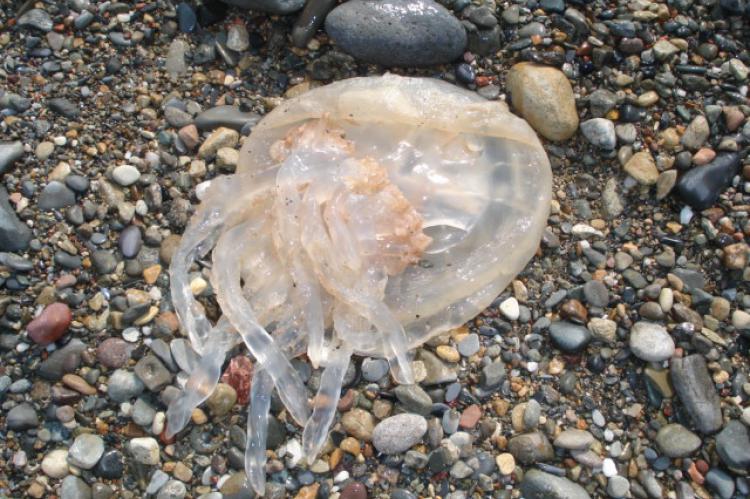Record jellyfish numbers flocking to British waters
Last year’s record numbers expected to be repeated. Billions already congregating by mid-summer
According to a new study by the Marine Conservation Society and the University of Exeter, last year saw record jellyfish numbers in British seas and is expected to be equaled this year, with billions of the creatures already congregating by mid-summer.
Published in the Journal of the Marine Biological Association, the report maps jellyfish concentrations by species and location using data collected over the last decade.
Known as the ‘barometer of the seas’, the animals are incredibly sensitive to changes in temperature, pollution and predators. However, scientists remain divided as to the conditions responsible for the population increases. In some years, hot weather can cause jellyfish fluctuations of, but in others does not. Some believe tides and winds have an impact, with water funneled up into the Celtic and Irish Seas drawing billions into British waters.
Jelly soup
Numbers are particularly dense off the coasts of Cornwall, Devon and south Wales, especially for species such as the four-foot long barrel jellyfish. “In parts of the South West it is absolute jellyfish soup right now. We are experiencing a real jellyfish boom,” said Dr Peter Richardson, biodiversity programme manager for the MCS.
Although survey results revealed only three of the five most common jellyfish sting humans, Dr Richardson said there are other important impacts to consider.
In recent years, vast influxes of jellyfish have wipe out salmon farms and in 2011, Scotland’s Torness power station was forced to close after jellyfish clogged its machinery.
“We can’t afford to ignore the costs to the environment of an increase in jelly-fish,” added Dr Richardson.” It can affect tourism, it can affect power generation, it can affect fishing. That is why we have started this process of mapping hot spots of jellyfish, when and where they appear.”
By mid-July of this year, 500 reports have already been received, only halfway through the summer months when most records are received. The moon jellyfish, a transparent umbrella-shaped species, was the most frequently spotted species as well as being the most widely distributed. Other common sightings were for compass, lion’s mane, blue and barrel jellyfish. Additional species include the mauve stinger, Portuguese Man of War and the by-the-wind sailor, which are sporadic visitors to British coasts.
“We still know relatively little about jellyfish, but given the economic impacts that large numbers of jellyfish can have on tourism, fishing, aquaculture and even power generation, we can’t afford to ignore them,” said Dr Richardson.


